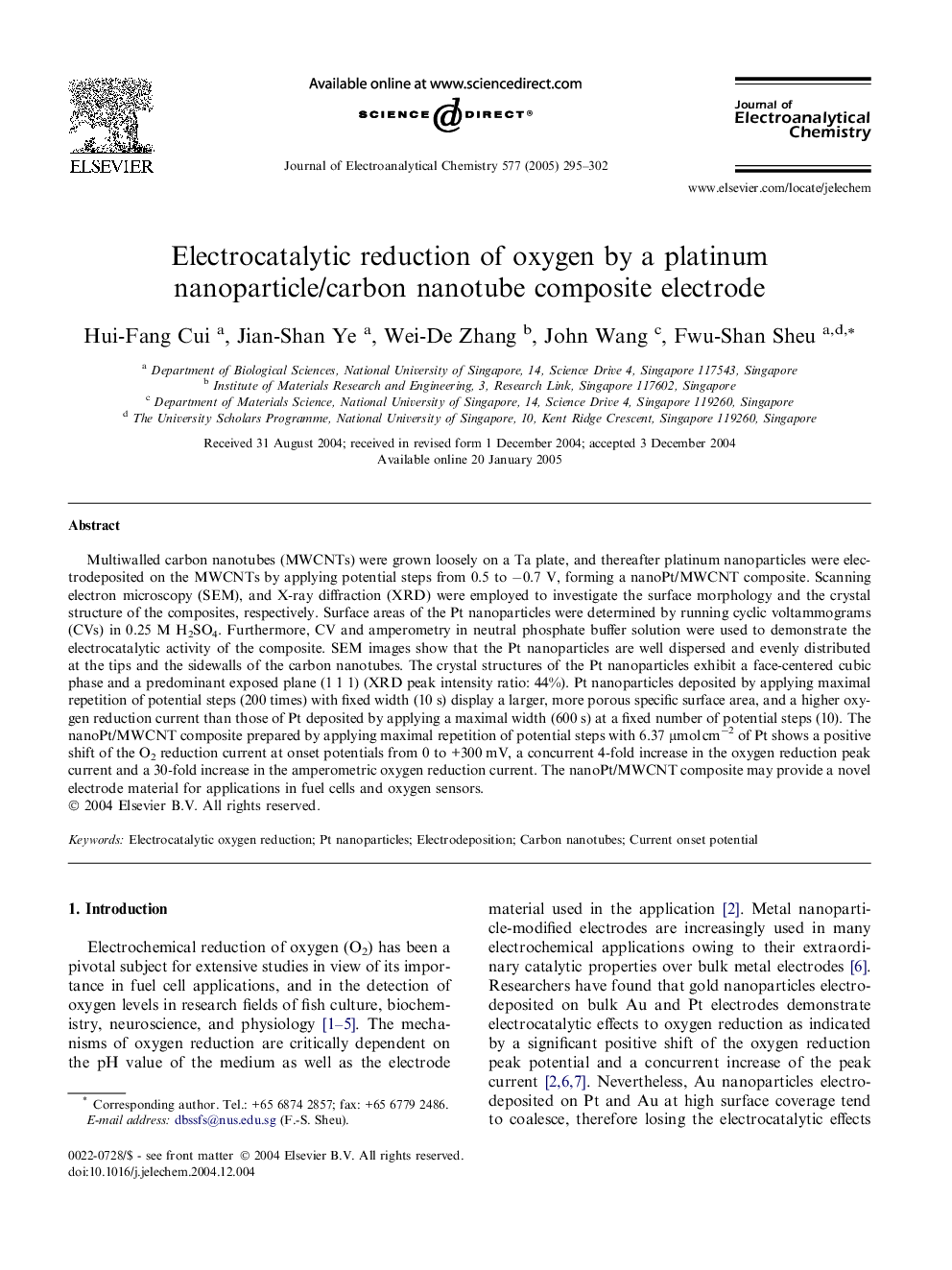| Article ID | Journal | Published Year | Pages | File Type |
|---|---|---|---|---|
| 10276091 | Journal of Electroanalytical Chemistry | 2005 | 8 Pages |
Abstract
Multiwalled carbon nanotubes (MWCNTs) were grown loosely on a Ta plate, and thereafter platinum nanoparticles were electrodeposited on the MWCNTs by applying potential steps from 0.5 to â0.7 V, forming a nanoPt/MWCNT composite. Scanning electron microscopy (SEM), and X-ray diffraction (XRD) were employed to investigate the surface morphology and the crystal structure of the composites, respectively. Surface areas of the Pt nanoparticles were determined by running cyclic voltammograms (CVs) in 0.25 M H2SO4. Furthermore, CV and amperometry in neutral phosphate buffer solution were used to demonstrate the electrocatalytic activity of the composite. SEM images show that the Pt nanoparticles are well dispersed and evenly distributed at the tips and the sidewalls of the carbon nanotubes. The crystal structures of the Pt nanoparticles exhibit a face-centered cubic phase and a predominant exposed plane (1 1 1) (XRD peak intensity ratio: 44%). Pt nanoparticles deposited by applying maximal repetition of potential steps (200 times) with fixed width (10 s) display a larger, more porous specific surface area, and a higher oxygen reduction current than those of Pt deposited by applying a maximal width (600 s) at a fixed number of potential steps (10). The nanoPt/MWCNT composite prepared by applying maximal repetition of potential steps with 6.37 μmol cmâ2 of Pt shows a positive shift of the O2 reduction current at onset potentials from 0 to +300 mV, a concurrent 4-fold increase in the oxygen reduction peak current and a 30-fold increase in the amperometric oxygen reduction current. The nanoPt/MWCNT composite may provide a novel electrode material for applications in fuel cells and oxygen sensors.
Related Topics
Physical Sciences and Engineering
Chemical Engineering
Chemical Engineering (General)
Authors
Hui-Fang Cui, Jian-Shan Ye, Wei-De Zhang, John Wang, Fwu-Shan Sheu,
